The most prominent members of the Oulipo are making a rare descent upon New York this week; there are readings at the New School tonight and in Pierogi in Williamsburg on April 3rd. (A complete schedule of events can be found here.) Oulipo is the Ouvroir de littérature potentielle (the workshop of potential literature), a group of mostly French mathematicians and writers who use constraint to generate new literary forms. The most well-known Oulipians are the late Marcel Duchamp, Raymond Queneau, Italo Calvino, and Georges Perec; the group, however, carries on, and Marcel Bénabou, Anne Garréta, Hervé Le Tellier, Ian Monk, Jacques Roubaud, and Harry Mathews will be talking about their work.
Part of the occasion for their arrival is the publication of Jacques Roubaud’s The Loop in Jeff Fort’s English translation by the Dalkey Archive. (There’s a launch party tomorrow night at Idlewild Books.) The Loop, originally published in France in 1993, is the second volume of a series of works collectively called The Great Fire of London; five volumes have been published in France, and a sixth and final volume is in the works. While the first volume (published under the same name as the series) was translated into English in 1992, it’s taking a while for the rest of them to appear here. The Great Fire of London is worthy of mention here because it’s perhaps the most extended literary use of hypertext. The two volumes published here have “Fiction” stamped on the back cover, but that’s not entirely accurate: these books are writing about writing, a metafictional memoir if you will, arranged around Roubaud’s inability to write a novel entitled The Great Fire of London. (Marcel Bénabou confronts this issue more concisely in a book of his own entitled Why I Have Not Written Any of My Books.)
“Metafiction” is a word used in criticism to damn writing more often than not; especially in this country, it’s frequently presented as ivory tower excess, obfuscatory, the enemy of American plain-speaking. The Great Fire of London is certainly subject to these criticisms: Roubaud is dazzlingly intelligent (while a professor of mathematics at the Sorbonne he studied for a second doctorate in poetry), and his writing pulls no punches; within the first chapter of The Loop, the reader is faced with explorations of the ideas of Nicholas of Cusa, Wittgenstein, and Kripke, to name only the philosophers. But The Great Fire of London is also a very personal work: as explained in the first volume, Roubaud began writing the work after the death of his wife Alix as a means of working through grief. His wife’s presence hovers over the first two volumes of the work, albeit obliquely: her death is never discussed directly. Roubaud wakes every morning before dawn and writes a section of his evolving book; he forces himself to work linearly, not to revise, not to leave anything out. The first volume focuses on his conception of his project and his writing, though there are memoiristic departures: Roubaud’s ideas about how croissants should work and how jam was prepared in his childhood in Provence; the memory of an American love affair and his tastes in English novelists all make their way in to his narrative.
Roubaud does not constrain himself to a strictly linear writing style: periodically there are interpolations, glosses on passages of his linear book that go on for a few pages; interpolations frequently have their own interpolations. There are also bifurcations: sometimes Roubaud sees another way that his narrative could go and follows it for a longer period. The reader flips back and forth through the sections of the book; to follow Roubaud’s suggested pathway (which, he points out, is not the only way to read the book) requires three bookmarks.
Here, as a demonstration, is a diagram of the first chapter of The Loop, showing how 90 pages of the book’s text are interconnected: the chapter itself is about 30 pages, there are about 30 pages of interpolations, and the bifurcation also lasts for 30 pages. Horizontal connections are interpolations, where linear text is interrupted to suggest a possible digression; vertical connections are linear connections. The complete book is about six times this length; I’d love to see a complete map of the book, though I haven’t found one yet.

It should be noted that this diagram only captures the explicit interconnections in the book; there are also implicit interconnections, and especially in the bifurcation Roubaud refers back to other interpolations that the reader trying to follow the explicit map will not yet have read. Like Cortázar’s Hopscotch, this is a book that demands re-reading. Dominic Di Bernardi’s afterword to the English translation of The Great Fire of London, “The Great Fire of London and the Destruction of the Book”, argues that Roubaud’s work is the future of the book: the future was hypertext. Read 17 years later, this feels like a flying car vision of the future; the hypertext future that everyone imagined in 1992 never really arrived.
Roubaud’s work, by contrast, now feels like a deeply personal project: one man’s attempt to map out his memory as accurately as possible using the formal tools available to him, trying to smash the architecture of memory into the Procrustean bed imposed by the strict linearity of our readership of text. In The Great Fire of London, Roubaud explains how he works with a typewriter, an electronic model named Miss Bosanquet III (named after the secretary of Henry James); Miss Bosanquet III’s primitive word-processing capabilities allowed him to edit one line of text before it was printed. With The Loop, Roubaud started composing using a Mac. The results are obvious as soon as one opens the book: text is bolded, italicized, and underlined, and the type size changes. The Loop is primarily about Roubaud’s childhood, but it’s also necessarily an exploration of how writing can approach the problem of mapping memory, and, by extension, how technology changes writing. The problem for the reader of Roubaud is that technology changes reading as well: we’re left trying to catch up.
Tag Archives: memory
remembering with social networks
With 75 percent of all college students on Facebook, and websites like New York Times becoming social-network aware, it’s not surprising that in just a few years, for many, social networks are the preferred method for staying in contact (rivaling email, phone and instant message, which are in themselves new technologies). And we should expect this trend to continue; there are even social networks for toddlers! Ostensibly this means that associations from the moment we are born will be cataloged and easily recalled.
It’s a bizarre prospect but it seems like that’s where we are headed.
Having all this information about your social group so readily available reminds me of a point Dan raised in the post “The Persistence of Memory,” where he compares the internet to the story of Funes, a man who after an accident finds himself with perfect memory:
Give it time, though: in a decade, there will be a generation dealing with embarrassing ten-year-old MySpace photos. Maybe we’ll no longer be embarrassed about our pasts; maybe we won’t trust anything on the Internet at that point; maybe we’ll demand mandatory forgetting so that we don’t all go crazy.
If the internet, like Funes, can haunt us with our memories, I think it can also rob us from the need to recall.
A few months ago I met with an old friend, who I had not seen in years, and his wife. The next time we met he told me that his wife recognized me and that when she looked through old class photos she found a photo of us sitting next to each other in first grade. “What’s her name again!” I asked excitedly and wave of memories came rushing back to me. It’s as if the act of unlocking memories (as long as they are not unpleasant memories) opens a valve that briefly activates all your emotions at once; like picking up the scent of an old lover.
Dunbar’s number states that 150 is the maximum number of individuals we can maintain social relationships with. I wonder if the excitement occurs when the person falls off your “Top 150” and quickly get backs on. It’s interesting to think that these sorts of serendipitous encounters might become much less common as you have access to the whereabouts of everyone you’ve ever encountered, cheapening each realization and never allowing anyone to fall off the list for long enough to make it unique.
the persistence of memory
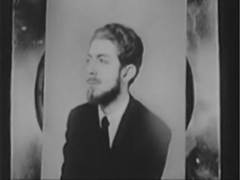 Jorge Luis Borges tells the story of “Funes, the Memorious,” a man from Uruguay who, after an accident, finds himself blessed with perfect memory. Ireneo Funes remembers everything that he encounters; he can forget nothing that he’s seen or heard, no matter how minor. As one might expect, this blessing turns out to be a curse: overwhelmed by his impressions of the world, Funes can’t leave his darkened room. Worse, he can’t make sense of the vast volume of his impressions by classifying them. Funes’s world is made up entirely of hapax legomena. He has no general concepts:
Jorge Luis Borges tells the story of “Funes, the Memorious,” a man from Uruguay who, after an accident, finds himself blessed with perfect memory. Ireneo Funes remembers everything that he encounters; he can forget nothing that he’s seen or heard, no matter how minor. As one might expect, this blessing turns out to be a curse: overwhelmed by his impressions of the world, Funes can’t leave his darkened room. Worse, he can’t make sense of the vast volume of his impressions by classifying them. Funes’s world is made up entirely of hapax legomena. He has no general concepts:
“Not only was it difficult for him to see that the generic symbol ‘dog’ took in all the dissimilar individuals of all shapes and sizes, it irritated him that the ‘dog’ of three-fourteen in the afternoon, seen in profile, should be indicated by the same noun as the dog of three-fifteen, seen frontally. His own face in the mirror, his own hands, surprised him every time he saw them.”
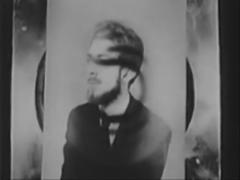 (p. 136 in Andrew Hurley’s translation of Collected Fictions.) Funes dies prematurely, alone and unrecognized by the world; while we are told that he died of “pulmonary congestion,” it’s clear that Funes has drowned in his memories. While there are advantages to remembering everything, Borges’s narrator realizes his superiority to Funes:
(p. 136 in Andrew Hurley’s translation of Collected Fictions.) Funes dies prematurely, alone and unrecognized by the world; while we are told that he died of “pulmonary congestion,” it’s clear that Funes has drowned in his memories. While there are advantages to remembering everything, Borges’s narrator realizes his superiority to Funes:
“He had effortlessly learned English, French, Portuguese, Latin. I suspect, nevertheless, that he was not very good at thinking. To think is to ignore (or forget) differences, to generalize, to abstract. In the teeming world of Ireneo Funes there was nothing but particulars – and they were virtually immediate particulars.”
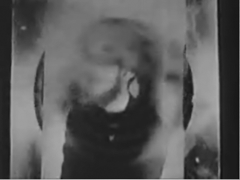 (p. 137) Borges’s story isn’t really about memory as much as it is about how we make sense of the world. It’s important to forget things, to ignore the minor differences between similar objects. We recognize that the dog the Funes sees at three-fourteen and the dog that he sees at three-fifteen are the same; Funes does not. Funes dies insane; we, hopefully, do not.
(p. 137) Borges’s story isn’t really about memory as much as it is about how we make sense of the world. It’s important to forget things, to ignore the minor differences between similar objects. We recognize that the dog the Funes sees at three-fourteen and the dog that he sees at three-fifteen are the same; Funes does not. Funes dies insane; we, hopefully, do not.
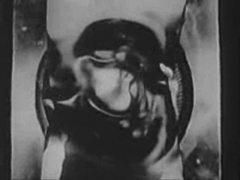 I won’t pretend to be the first to see in the Internet parallels to the all-remembering mind of Funes; a book could be written, if it hasn’t already been, on how Borges invented the Internet. It’s interesting, however, to see that the problems of Funes are increasingly everyone’s problems. As humans, we forget by default; maybe it’s the greatest sign of the Internet’s inhumanity that it remembers. With time things become more obscure on the Internet; you might need to plumb the Wayback Machine at archive.org rather than Google to find a website from 1997. History becomes obscure, but it only very rarely disappears entirely on the Internet.
I won’t pretend to be the first to see in the Internet parallels to the all-remembering mind of Funes; a book could be written, if it hasn’t already been, on how Borges invented the Internet. It’s interesting, however, to see that the problems of Funes are increasingly everyone’s problems. As humans, we forget by default; maybe it’s the greatest sign of the Internet’s inhumanity that it remembers. With time things become more obscure on the Internet; you might need to plumb the Wayback Machine at archive.org rather than Google to find a website from 1997. History becomes obscure, but it only very rarely disappears entirely on the Internet.
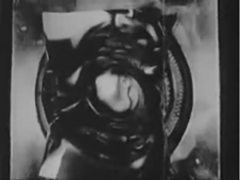 A recent working paper by Viktor Mayer-Schoenberger, a professor at Harvard’s Kennedy School of Government, recognizes the problems of the Internet’s elephantine memory. He suggests pre-emptively dealing with the issues that are sure to spring up in the future by actively building forgetting into the systems that comprise the network. Mayer-Schoenberger envisions that some of this forgetting would be legally enforced: commercial sites might be required to state how long they will keep customer’s information, for example.
A recent working paper by Viktor Mayer-Schoenberger, a professor at Harvard’s Kennedy School of Government, recognizes the problems of the Internet’s elephantine memory. He suggests pre-emptively dealing with the issues that are sure to spring up in the future by actively building forgetting into the systems that comprise the network. Mayer-Schoenberger envisions that some of this forgetting would be legally enforced: commercial sites might be required to state how long they will keep customer’s information, for example.
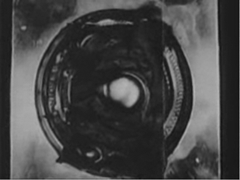 It’s an interesting proposal, if firmly in the realm of the theoretical: it’s hard to imagine that the public will be proactive enough about this issue to push the government to take issue any time soon. Give it time, though: in a decade, there will be a generation dealing with embarrassing ten-year-old MySpace photos. Maybe we’ll no longer be embarrassed about our pasts; maybe we won’t trust anything on the Internet at that point; maybe we’ll demand mandatory forgetting so that we don’t all go crazy.
It’s an interesting proposal, if firmly in the realm of the theoretical: it’s hard to imagine that the public will be proactive enough about this issue to push the government to take issue any time soon. Give it time, though: in a decade, there will be a generation dealing with embarrassing ten-year-old MySpace photos. Maybe we’ll no longer be embarrassed about our pasts; maybe we won’t trust anything on the Internet at that point; maybe we’ll demand mandatory forgetting so that we don’t all go crazy.
Images from Hollis Frampton’s film (nostalgia), 1971.
